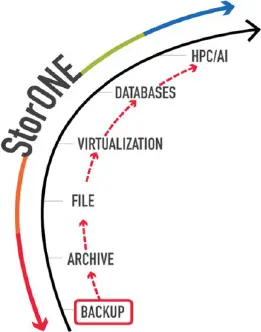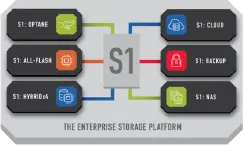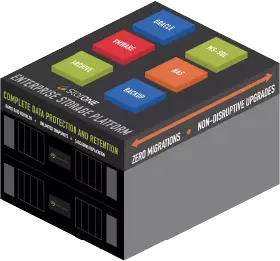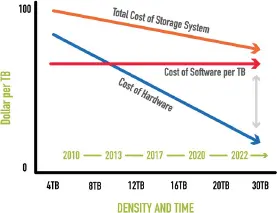Storage Consolidation
Efficiently Managing and Optimizing Your Data Infrastructure

Unleashing Full Hardware Potential Through Software Abstraction
We offer a unique platform that isolates the logical storage functionality from the hardware ,enabling unparalleled flexibility and efficiency in a multi- cloud world. This decoupling allows you to fully maximize hardware utilization and supports the running of all protocols and storage media types, whether on-premises, in the cloud, or at the edge. As a result, you can manage all your storage use cases through a single, unified data platform.

Multi-Protocols
We’ve engineered a solution for storage consolidation that supports an extensive range of protocols— be it block-level, file-level, or object-level. This allows for the unification of various workloads and systems into one comprehensive platform without the resource constraints or impacts of some application use cases. Our system is compatible with a diverse array of storage environments, effectively breaking down silos and promoting efficiency.
Designed with future-proofing in mind, our storage solution adapts to new workloads or migrations without causing disruptions. This ensures your storage environment can scale and evolve along with your business, optimizing resource utilization while enabling cost-effective growth.
Streamlined Applications
By consolidating applications onto one data platform, we not only streamline management but also elevate resource utilization. This enhances both operational efficiency and overall performance. Our unified platform promotes seamless data accessibility and integration, enabling real-time data exchange and facilitating informed decision-making. Streamlined backup and disaster recovery, along with enhanced security features, are additional advantages, minimizing data loss risks and improving recovery times.
Moreover, cost savings are substantial. Reduced infrastructure and maintenance expenses combined with more efficient licensing to lighten the budget. The unified nature of the platform also makes implementing consistent security measures simpler, aiding in compliance adherence. This fortifies data security and minimizes the risk of breaches.


Efficiency through Storage Systems Consolidation
Consolidating multiple siloed storage platforms into a singularly managed data storage platform offers us various benefits, including improved energy efficiency. By reducing the number of physical systems, we optimize power usage, cooling needs, and overall energy consumption in our data centers. This also enables better resource allocation, efficiently distributing storage, compute power, and network bandwidth based on workload needs.
Furthermore, eliminating the management of multiple storage systems streamlines operations for our IT teams. This reduction in complexity lets us focus on a unified platform, leading to time savings, increased productivity, and more efficient resource utilization. In essence, this consolidation empowers us to operate more effectively while minimizing our environmental footprint
Unified Storage Platforms
Our unified storage platform simplifies management through a centralized interface for all storage resources. By streamlining tasks, IT administrators save time and enhance operational efficiency. Scalability improves, enabling effortless expansion of storage capacity and performance. Enhanced data mobility allows smooth movement across various storage types.
Consolidation yields cost savings by eliminating separate systems and reducing expenses. Moreover, data protection strengthens with consistent strategies, and performance advances via advanced optimization techniques. In essence, our unique and unified approach optimizes management, scalability, cost-effectiveness, and data integrity.



Risk-Free Data Platform
Consolidating storage platforms with StorONE eliminates data migration risks. By transitioning to a unified platform with its ability to utilize and add any hardware as the system grows, we avoid complex and potentially problematic data migrations entirely. This approach minimizes downtime and disruptions since there is no need for us to physically move or switch between systems.
Our data integrity and consistency is preserved as our data remains within the unified platform, reducing the risk of corruption, loss, or inconsistencies associated with migrations. In essence, this strategy ensures a seamless transition while safeguarding the reliability of our data.
